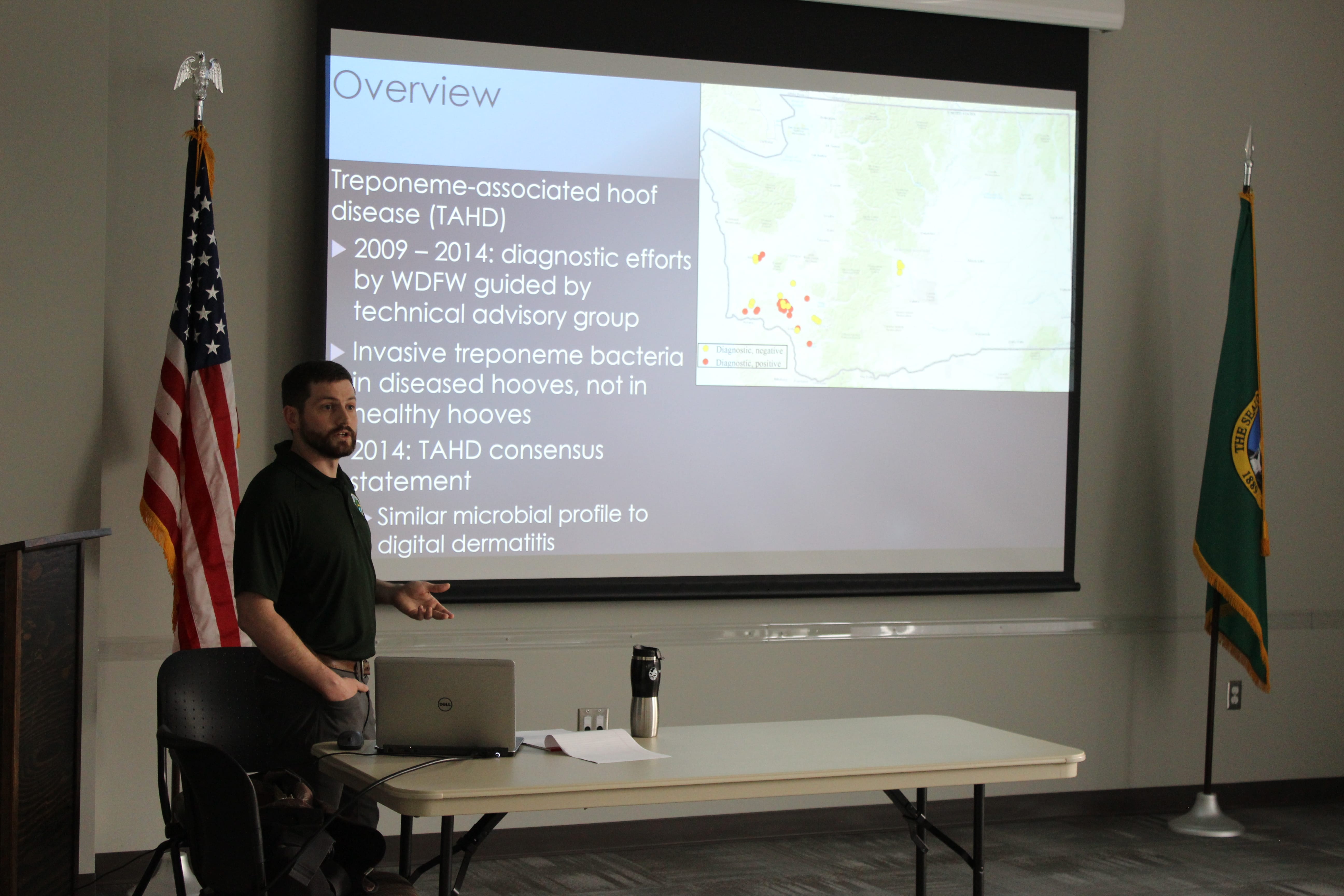RIDGEFIELD — The Washington Department of Fish and Wildlife plans to euthanize up to 20 elk infected with hoof disease in the Trout Lake Valley in northwest Klickitat County in an attempt to stop the spread of the disease.
The WDFW presented a briefing about the hoof disease outbreak and the plans for their response to it during a public meeting at the WDFW Region 5 headquarters on Thursday.
The disease results in lesions and crippling hoof deformities. Infected animals often eventually die from starvation because they cannot walk well enough to feed.
According to the WDFW, the disease, which has spread from its core area of the Mt. St. Helens area to 11 counties in western Washington, is a form of Treponema-associated hoof disease (TAHD). It is similar to digital dermatitis, a bacterial infection that affects the hooves of domestic cattle and sheep.
At times the meeting turned contentious as members of the public in attendance voiced their frustration with the department’s response to the disease, and the lack of progress over the last 10 years. Many of them live in the core area and often see limping and crippled elk daily.
Charlie Powell, the senior information officer for Washington State University, informed the audience that a scientist had been chosen by the university to lead the study, and could be announced soon.
The university was tasked with investigating the disease by the Washington State Legislature, and was provided with a grant to finance that effort.
Powell also assured the public that the university would not just focus on TAHD, which WDFW has maintained is the cause of the malady. He explained that the study would test many different parts of the animals for a wide variety of possible pathogens.
“It’s also possible that in the future we could try keeping some captive animals to try to induce the disease,” he said.
That would show if elk-to-elk transmission is possible.
Some in attendance questioned why certain other methods of containing the disease had not been tried before now.
“Why no check stations?” asked Bruce Barnes of Toutle.
Barnes pointed out that check stations have been used by many states to combat the spread of Chronic Wasting Disease in deer.
Powell’s assurances satisfied some of the attendees, but many were still skeptical when the meeting ended.




